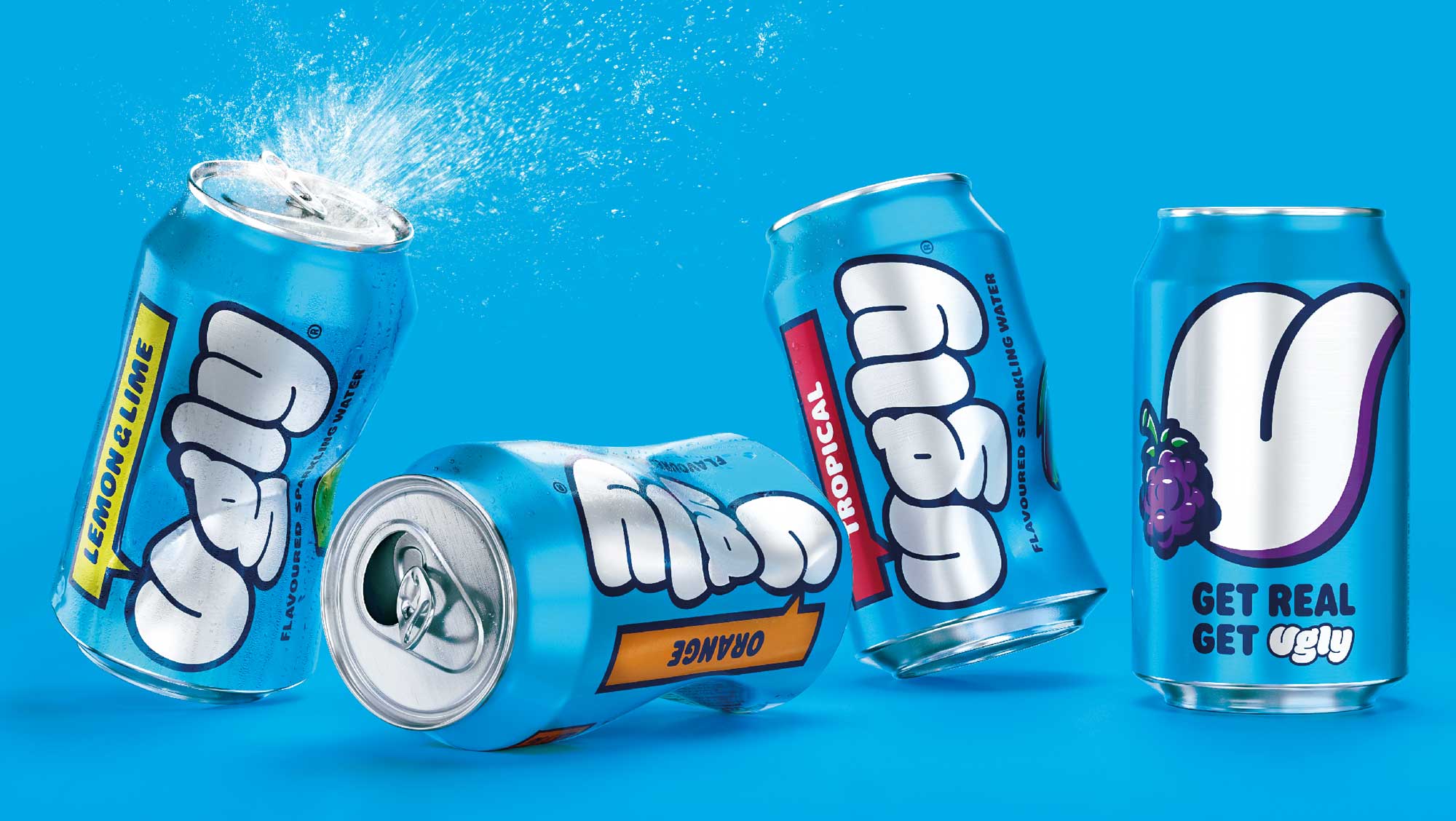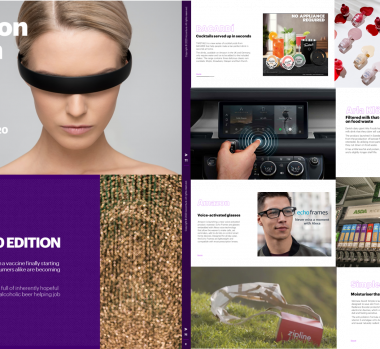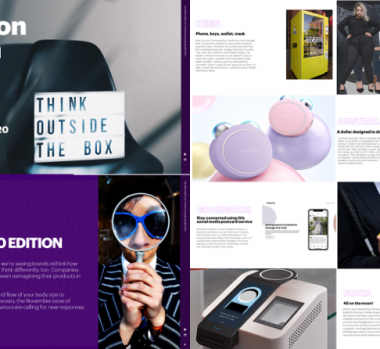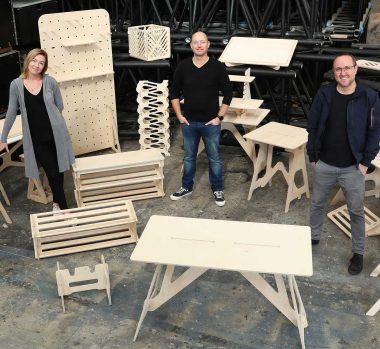The Innovator October 2020: The direct to consumer model behind Ugly Drinks’ growth
In the two years since, the startup launched in the US where it set up a huge direct to consumer business that is seeing it through the retail obstacles brought by Covid-19. Now residing in New York, we talk to Thomas about how the pandemic is impacting business, long term health trends and working life.
How has the wellbeing trend helped your business. Has Covid-19 impacted that?
The movement has been growing very quickly in the UK and the US. In the first three months of Covid-19 it actually accelerated – health is driving that agenda even more. Ugly Drinks is a value product, but it feels like you’re drinking a soda. Even Coke and Pepsi are entering this space now, and the more space it takes up in the store, the more consumers there are in the category. We are a counter-culture brand so our customers don’t buy into the big brand mentality and stick with us. What we didn’t want to do was create a $10 green juice or kombucha – we wanted to democratise this space and create a can of soda everyone can afford. WIth the economy heading the way it is, people have less cash but can still fill a fridge with Ugly Drinks.
What else has helped the business grow fast in the US?
We have been omnichannel since day one, including a direct-to-consumer business and sales on Amazon. A lot of people have shifted to direct-to-consumer in the past few months, but we’ve been doing it for three years. We’ve had 500% growth in that channel since Covid-19 hit. We already have all the infrastructure in place, along with the data, email addresses and customer services. A lot of blood, sweat and tears went into that. We’ve also evolved the product offering and format. We have 16oz tallboy cans and an energy water range. That’s all thanks to consumer feedback online. Bigger sizes are in convenience stores such as 7-Elevens where there’s a huge opportunity for healthy beverages. There are 200,000 convenience stores in the US, and 500 Whole Foods.
What are the differences between the UK and US market?
In the US this category is on fire, it has broken through to the mainstream and genuinely impacted soda numbers like for like. In the UK the challenge is still getting someone to switch away from sugary drinks. They have had unsweetened, flavoured water in the US market for 20 years and other healthy beverages such as Vita Coco or Vitamin Water have had a lot of growth. Flavoured sparkling water is now a $5 billion category. In the UK we are on our way to £50-100 million in the next few years.
Can you tell us more about your omnichannel approach?
This will be spoken more and more about after Covid-19 than before. There is a direct-to-consumer revolution going on. I don’t think any one channel is the right answer – it’s a mixture of all of them, and we’re trying different strategies across all of those. Ugly Drinks beverages should be available when you’re thirsty in whatever is the easiest way to purchase. Amazon is the biggest search engine for purchases, along with the likes of Ocado and Tesco in the UK. You have to be in-store in multipacks and cold cans. But it’s direct-to-consumer that gives us such a rich community and data. It enables us to make quicker innovation decisions.
How has customer data informed your new products?
Our energy water was purely based on consumer requests. There were requests for a plain product, Pina Colada, and every month we launch limited edition flavours direct-to-consumers online. We sent surveys to consumers that bought cherry cola flavour. If people like it, we take it to retailers. The whole website and the way it works, from the back to the front end, is all tweaked based on feedback we get.
How do you balance focus in the UK and US?
There is plenty of complexity and we are spinning multiple plates. We’re a small team. If we learn something in the US we translate that into the UK. We’ve been very aggressive in D2C and the UK has kept pace. When peach flavour worked well in the US we brought it to the UK, and it was the best performing flavour in the UK. We’re trying to create synergies between the two countries when we can. It’s hard to do everything in every country at once. Europe is the biggest sparkling water consumer in the world – just not of flavoured sparkling water. But the consumer is changing, and who knows what will happen to consumer tastes in 6-12 months. In the US there are lots of tax benefits on seltzers.
Has Covid-19 impacted your strategy at all?
We delayed the limited edition flavours. We were ready to go, but for a period of 4-6 weeks no one cared what any brand was saying so we dialled it back. We focussed on getting the basics right and fulfilling a retail need. There are a lot of people buying a lot of our products since they have a long shelf life. We had to plan where to put resources, and different areas did different lockdowns at different speeds. In places that have opened up in the US, our team is still in full Covid safety protocol. Our staff was locked down from day one and worked remotely. People have gone back to keep the business running, but follow social distancing.
What will the future of work look like, post-Covid-19?
We’ve left our office spaces – the leases had to be renewed so we moved out of both office spaces in the UK and US. I think it will end up being a hybrid. There are a lot of efficiencies, in terms of software and speed. But sometimes you can’t replace human collaboration. We will end up with a more flexible workplace where people can work where they want, when they want and are welcome to come to a small office space to collaborate. Working with a physical product and taste is really hard to do remotely.
What does innovation mean in challenging times?
We’ve done a lot of innovation in the last 12 months – a lot of new products and flavours. We’re stretching ourselves as a small business in terms of range. But we’ve postponed anything new because we need to be laser focussed. We have a great brand, and a great product that’s resonating. Our focus now is making it better. We’re innovating around making current products bigger, making sure it tastes better, and the packaging is better. We also have three ranges. That’s multiple skews for a small startup. We’re improving how we get products to people and we’re innovating 24/7 on SMS commerce. Beyond the core product, limited editions add a lot of value to D2C. We’ll also be innovating around value over the next 12 months. Some more lavish innovations in companies might not be as relevant as before – we need to stay value focussed and listen to our consumers.
Get in touch


